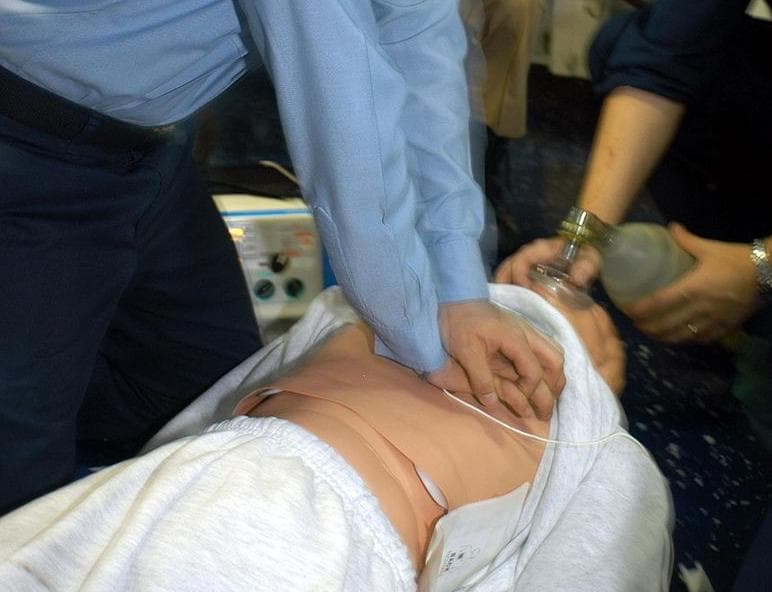CPR with an Advanced Airway

Today we are going to focus on a case review. The case in question is whether or not it is appropriated to give continuous compressions with a BVM (bag valve mask). There are circumstances when continuous compressions are appropriate, and we will look at those conditions. I am also going to explain why it is so fundamental that you know when to do each one of these, and the effect it could have on your patient if you choose to do the wrong one.
Case Study: Continuous Compression with a BVM
The case is a cardiac arrest that I worked. The patient was brought into the ER. The patient coded while in the ER and CPR was started. I was doing ventilations with a bag valve mask at the patient’s head. A nurse was in charge of doing the compressions.
I was waiting for her to pause so I could give my breaths. However, the nurse didn’t seem to be stopping. She kept going with the compressions to the point where I had to ask what number she was on. Amazingly she told me she was on the 35th compression. I told her I needed to give my 2 breaths. The doctor then informed me that at this hospital they did continuous compressions. He pointed out that they were doing well, and that the patient’s oxygen level was at 100%. But were we really doing well?
Here’s the thing… I’m using a bag valve mask at the head to get air into the patient’s lungs. Meanwhile, the nurse is doing compressions on the lungs. This pushes the air out of the lungs. Giving continuous compression with a BVM at the same time is counter-productive. In fact, if I’m putting air into the airway while the nurse is pushing air out of the lungs there is only one place the air can go….the stomach.
When you are doing continuous compressions with a bag valve mask you are just pumping oxygen into the patient’s stomach. This is going to cause a lot more complications. The stomach will bloat due to the air which is called gastric distention. Your patient is then likely to vomit. They will inhale this vomit (aspirate into the lungs) which is often fatal.
The only time you should do continuous compressions is when you have secured an advanced airway such as an ET tube. This creates a definitive airway so the air can’t escape and end up in the stomach. Although not new, this is a 2015 American Heart Association guideline. This is clearly covered topic if you attend a BLS Provider class.
You can check out the video below where I illustrate on a white board what’s happening when continuous compressions are given with a BVM. Thanks for reading, and keep up with us for more useful info.


